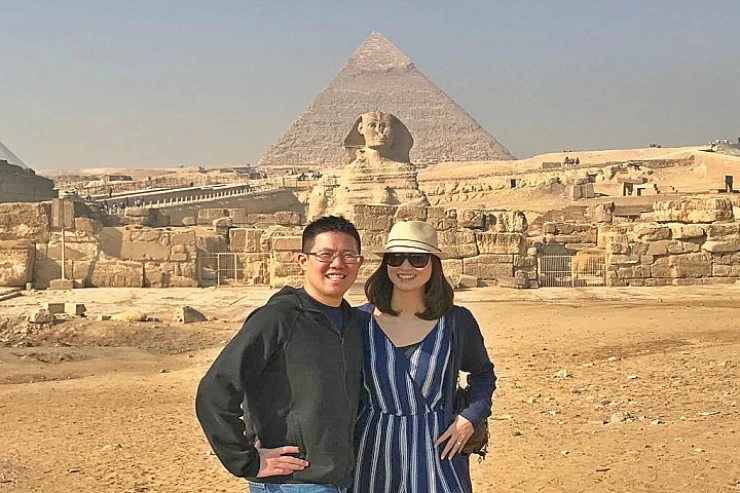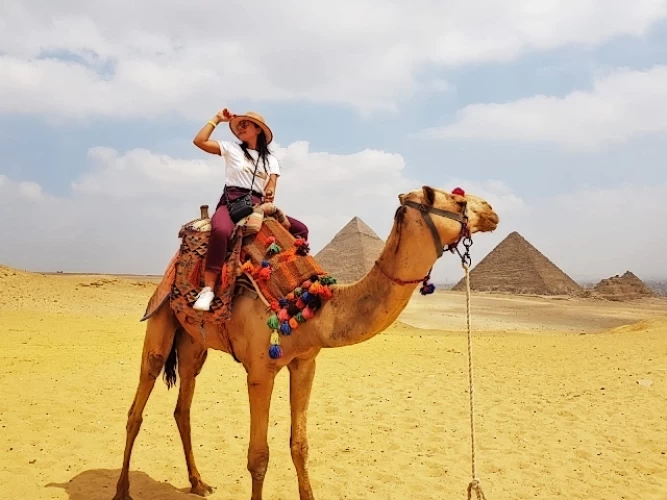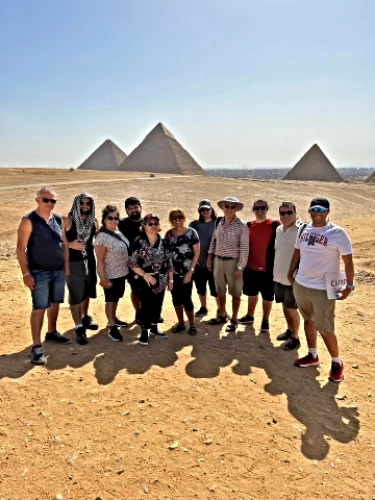In a modern air-conditioned car, we will pick you up from your hotel in Cairo or El Giza accompanied by one of our representatives with a professional guide to start your adventure exploring Cairo in a half-day tour.
Your tour starts with the Pyramids of Giza, where you will see two of the biggest pyramids constructed in ancient Egypt, the Great Pyramid and the Pyramid of Khafre, which are now well-known representations of ancient Egypt in the minds of Westerners. When the Greek poet Antipater the Sidonian named the Great Pyramid one of the Seven Wonders of the World, it gained particular notoriety throughout the Hellenistic period. Of the Seven Wonders of the Ancient World, the Great Pyramid is the oldest and only one that remains intact.
Also, The pyramid building is regarded as a stage in the evolution of tomb architecture in ancient Egypt, starting with a small subway pit that changed into a room and then into several rooms topped by a mastaba. The three pyramids of Giza are regarded as royal tombs, each bearing the name of the king who constructed and was buried in them.
After that, you will explore the Menkaure pyramid complex, which includes the king's pyramid, a corridor, a funerary temple, and a valley temple. During the Fifth Dynasty, a smaller frontal temple was added to the valley temple, which originally housed several statues of King Menkaure. The king's pyramid, which was finished around 2510 BC, has three sub-pyramids called the Pyramids of the Queens. Of the four main monuments in the Giza Pyramids complex, the Pyramid of Menkaure is the only one that has lost all of its original polished limestone shell.
You will also be able to see the statue of the Sphinx during our tour. Since the Sphinx temple, its environs, and probably the statue itself were not finished during the Old Kingdom, there is considerable uncertainty regarding the Sphinx's cultural setting and its original name given by the ancient Egyptians. The sun deity Hor-em-Akht, which translates to "Horus of the Horizon" in English and "Hermachis" in Greek, was thought to be personified in the Sphinx under the New Kingdom. It was specifically mentioned by Pharaoh Thutmose IV (1401–1391, or 1397–1388 BC) in his well-known artwork Hilm.
After a half day full of exploration we will take you back to your hotel.





























